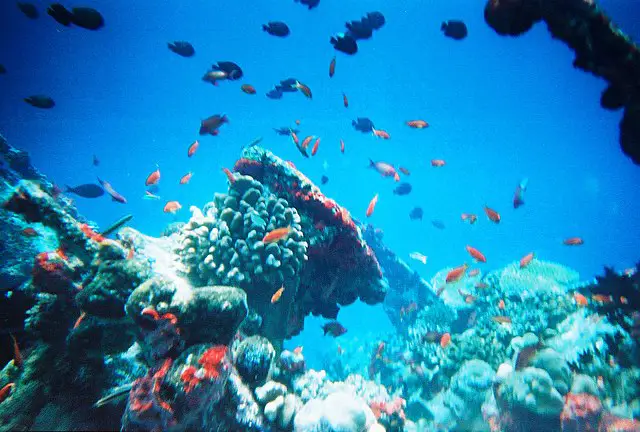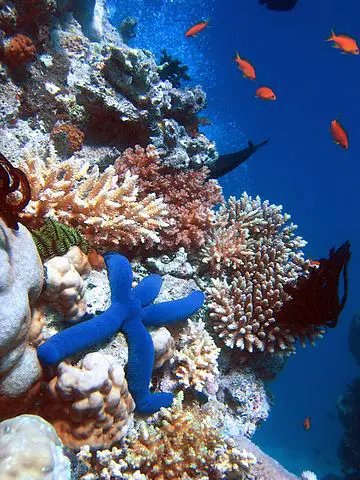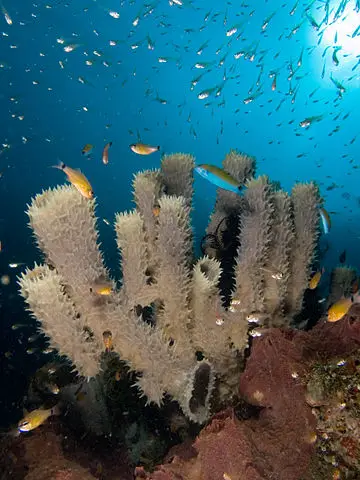The marine biome is the largest biome in the world. It covers 71% of the Earth and makes up 99% of all habitable space.
Some scientists question if categorizing the marine biome as one biome makes sense due to its great size.
The marine biome is divided into two sections: coastal and open ocean.

Coastal Marine
The coastal marine biome covers the area of the marine world that is closest to land. This includes the beaches, cliffs, shores, and the water all the way out to the continental shelf.
The continental shelf is the area just before the ocean floor drops off very suddenly. At its deepest, the continental shelf reaches a depth of 600 feet.
The organisms found on the continental shelf can gain access to sunlight. Beyond the continental shelf it is impossible for the sun’s rays to reach the ocean floor.
There is a huge amount of biological diversity found within the coastal marine biome. One of the most common plants found in the coastal marine biome is kelp. Kelp is a large alga that attaches to rocks at the bottom of the coastal region and float up to the surface.
Many of the animals that are found in the coastal marine biome are considered filter feeders. These are animals like mussels and oysters. These animals plant themselves in one area of the coastal marine biome and let their food come to them.
Other animals of the coastal marine biome are varying species of fish, sea birds, and seals.

Open Ocean
The open ocean biome covers the great distances between the continental shores. It covers all of the area from the tips of waves to the ocean floor.
The open ocean covers 45% of the Earth and is the largest individual biome. Much of the open ocean is over 2 miles deep.
The open ocean is broken up into vertical layers: Neustic, Euphotic, and Aphotic. The neustic zone is the skin at the water’s surface. The euphotic zone is the area of the ocean that sunlight can reach. This is usually about 500 feet. The aphotic zone is the area beneath the euphotic that sunlight cannot reach.
Even though it is so huge, the open ocean is not very populated with life. The euphotic zone has seaweeds and plankton, as well as animals like fish and whales.

The water in the aphotic zone becomes very cold, just above freezing. There are also very few nutrients found in this zone.
One of the deepest parts of the aphotic zone is called the abyssal zone. This zone surprisingly is home to many invertebrates and fish that can survive because of the presence of hydrothermal vents on the ocean floor.
Interesting Facts:
- The coastal marine biome is found off the coast of every continent
- All light disappears below 3,280 feet deep
- There is a deep ocean current that travels through all of the major oceans of Earth